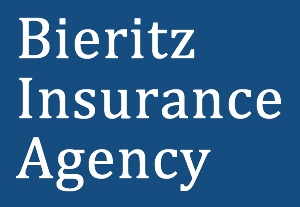Motorcycle Safety and Insurance
Protecting Yourself On and Off the Road
 Motorcycles offer a thrilling and liberating way to travel the open road, but they also come with unique risks that demand heightened attention to safety and insurance considerations. In this comprehensive guide, we’ll explore motorcycle safety tips to keep riders safe and delve into the importance of motorcycle insurance, highlighting how it differs from auto insurance.
Motorcycles offer a thrilling and liberating way to travel the open road, but they also come with unique risks that demand heightened attention to safety and insurance considerations. In this comprehensive guide, we’ll explore motorcycle safety tips to keep riders safe and delve into the importance of motorcycle insurance, highlighting how it differs from auto insurance.
Motorcycle Safety Tips
Riding a motorcycle can be an exhilarating experience, but it’s important to prioritize safety at all times. Here are some essential safety tips for motorcycle riders:
1. Wear Protective Gear
Wearing the right protective gear can make a world of difference in the event of an accident. Always don a DOT-approved helmet to protect your head and face. Additionally, invest in high-quality gear, including gloves, a sturdy jacket, pants, and boots, to shield your body from abrasions and injuries.
2. Regular Maintenance
Maintaining your motorcycle is critical for safety. Ensure that your bike receives routine inspections and maintenance checks. Pay attention to tire pressure, brake performance, and lighting to keep your motorcycle in optimal condition.
3. Defensive Riding
Practice defensive riding by staying aware of your surroundings. Assume that other drivers may not see you, and keep a safe following distance. Avoid riding in blind spots and always use your signals when changing lanes or turning.
4. Learn Proper Riding Techniques
Invest in professional riding courses to learn and refine your riding skills. These courses cover crucial aspects such as proper braking techniques, cornering, and emergency maneuvers. Continuous education can enhance your riding skills and boost your safety.
5. Weather Awareness
Adverse weather conditions can significantly impact motorcycle safety. Be cautious when riding in rain, fog, or snow, as road surfaces become slippery. Consider postponing your ride or reducing your speed to stay safe during adverse weather.
6. Avoid Riding Under the Influence
Never operate your motorcycle under the influence of alcohol or drugs. Impaired judgment and reflexes significantly increase the risk of accidents.
7. Be Visible
Increase your visibility on the road by using your motorcycle’s lights, wearing brightly colored gear, and applying reflective tape to your bike. The more visible you are, the better others can see you.
8. Stay Informed about Road Conditions
Stay informed about road conditions and traffic updates before embarking on a ride. Road closures, construction zones, or accidents can affect your route and safety.
9. Use Anti-lock Brakes (if available)
Anti-lock brakes (ABS) can prevent wheel lock-up during sudden stops, improving your ability to maintain control in emergency situations. If your motorcycle is equipped with ABS, make sure it’s in good working condition.
10. Ride Within Your Limits
Know your riding limits and avoid taking unnecessary risks. Don’t push your bike or your skills beyond what you’re comfortable with.
The Importance of Motorcycle Insurance
Motorcycle insurance is not just a legal requirement in most states; it’s also a vital tool for protecting yourself and your assets in case of accidents or mishaps on the road. Here’s why motorcycle insurance is crucial:
1. Financial Protection
Accidents involving motorcycles can result in substantial medical bills, property damage, and legal expenses. Motorcycle insurance provides financial protection by covering these costs, ensuring that you’re not burdened with overwhelming debt.
2. Legal Compliance
In many states, carrying a minimum amount of motorcycle insurance is a legal requirement. Failing to comply with this mandate can result in fines, license suspension, or even the impounding of your motorcycle.
3. Peace of Mind
Knowing that you’re financially protected can provide peace of mind while you’re on the road. Motorcycle insurance allows you to focus on enjoying your ride without worrying about the potential financial repercussions of an accident.
4. Liability Coverage
Motorcycle insurance typically includes liability coverage, which pays for bodily injury and property damage expenses when you’re at fault in an accident. This coverage protects you from having to pay out of pocket for others’ medical bills or property repairs.
5. Comprehensive and Collision Coverage
Comprehensive and collision coverage can be added to your motorcycle insurance policy to protect your bike. Comprehensive coverage pays for damages caused by non-collision events such as theft, vandalism, or natural disasters. Collision coverage covers repair costs if you’re involved in a collision with another vehicle or object.
6. Uninsured/Underinsured Motorist Coverage
If you’re involved in an accident with a driver who has little or no insurance, uninsured/underinsured motorist coverage can protect you. It covers your medical expenses and property damage when the at-fault driver’s insurance falls short.
7. Medical Payments Coverage
Medical payments coverage (MedPay) is similar to uninsured/underinsured motorist coverage but specifically covers your medical expenses and those of your passengers, regardless of fault.
How Motorcycle Insurance Differs from Auto Insurance
While both motorcycle and auto insurance share some similarities, there are key differences due to the unique risks associated with motorcycles:
1. Coverage Types
Motorcycle insurance policies typically offer similar coverage types as auto insurance, such as liability, comprehensive, collision, and uninsured/underinsured motorist coverage. However, the coverage limits and costs may differ significantly.
2. Premiums
Motorcycle insurance premiums tend to be higher compared to auto insurance. This is because motorcycles are generally riskier to insure due to their higher likelihood of accidents and injuries.
3. Vehicle Specifics
Motorcycle insurance accounts for the unique features of motorcycles, such as their smaller size and susceptibility to theft. These factors can influence coverage options and costs.
4. Riding Habits
Some motorcycle insurance policies may consider your riding habits when determining premiums. Factors like how often you ride, your experience level, and the types of bikes you own can affect your rates.
5. Seasonal Coverage
In regions with severe winters, riders may choose to suspend their motorcycle insurance during the off-season when they don’t ride. This is a cost-saving option not typically available with auto insurance.
In conclusion, motorcycle safety should always be a top priority for riders. By following safety tips and investing in proper protective gear, you can reduce the risks associated with riding. Additionally, having the right motorcycle insurance coverage is essential for protecting your financial well-being in case of accidents or unforeseen events on the road. Understanding the unique features of motorcycle insurance and how it differs from auto insurance will help you make informed decisions to ensure your safety and peace of mind while enjoying the open road. Call our team today for a free quote at 607-547-2951

